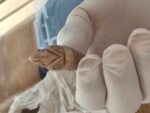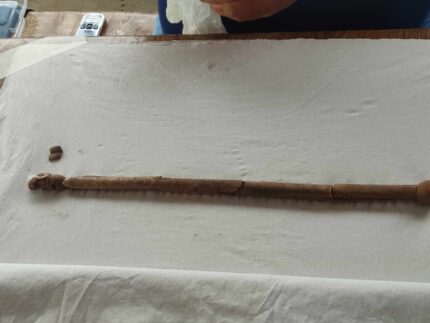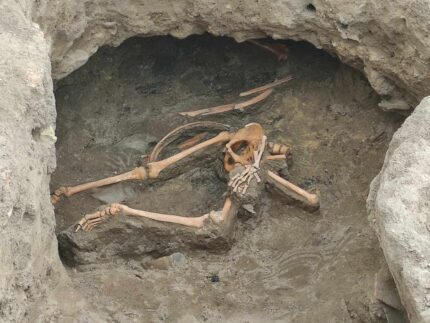A Scythian scepter carved from animal bone has been discovered in a 5th century B.C. warrior burial in Provadia-Solnitsata, northeastern Bulgaria. Bone scepters have been found before, but they are usually cross-shaped and the design of this one is unique.


The scepter was found in the grave of a warrior that had been opened in antiquity, but not looted. In addition to the bone scepter, archaeologists also found the skeletal remains of a horse, a small dog and a turtle. Although his skull and upper body are missing today, the posture of his body — legs open, one bent — is typical of Scythian burials. A heavily corroded iron knife was also found in the grave. The weapon and horse suggest the deceased may have been a cavalryman, and the scepter is a symbol of command, so he was likely a warlord.
Solnitsata was an ancient town near modern-day Provadia that is the oldest prehistoric town in Europe. The walled fortified settlement existed from 5,600 to 4,350 B.C. It prospered greatly off of salt production. The residents boiled water from a local spring to evaporate the liquid and collect the salt and then traded it throughout the Balkans. Salt was so expensive and valuable because it was essential to food preservation. That’s why the small settlement (population 350) had massive defensive walls built around 4,700 B.C..
The Scythians were latecomers to the area, migrating from the Eurasian steppe to arrive in what is now Bulgaria in the 7th century. When the Scythians first settled the area, they buried their dead in pre-existing burial mounds. The grave of the warrior with the scepter was not in a burial mound, but rather in a settlement mound.
The scepter is being kept in controlled laboratory conditions while it is studied and conserved. When it is ready for exhibition, it will go on display at the historical museum in Provadia.
* This article was originally published here










No comments:
Post a Comment